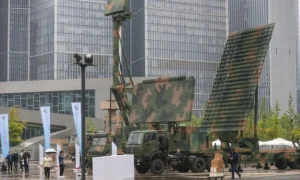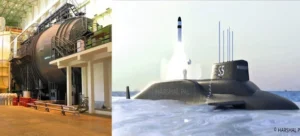Since the commencement of the standoff along the Line of Actual Control (LAC) due to Chinese incursions in May 2020, the Indian Army has significantly bolstered its presence in eastern Ladakh. This augmentation includes the deployment of over 400 Russian-origin T-72 and T-90 tanks and BMPs, equivalent to nearly three brigades. In comparison, only a third of these assets used to be stationed in the region previously.
Sustaining such a substantial armored fleet poses a significant challenge, especially given the harsh climatic conditions of eastern Ladakh, where temperatures during winters can plummet to as low as minus 30-degree Celsius. However, the dry desert-like terrain of Ladakh is well-suited for the deployment of tanks and mechanized vehicles, and its broad river valleys offer ample space for maneuvers.
To overcome the challenges posed by the extreme cold, the Indian Army has turned to special fuel and multigrade lubricants that can endure a wide range of temperatures. These products were developed for alpine regions and are now being introduced by Indian companies.
Trials of common all-temperature diesel fuels have been successful, and they will be procured for the entire fleet. This move will reduce the need to stock multiple types of fuel. Additionally, the Army is introducing better hydraulic fluids that do not freeze at lower temperatures or lose viscosity during extensive operations, benefiting both tanks and artillery guns deployed in the region.
Pure Lead Tin (PLT) batteries are being deployed for the entire range of heavy vehicles stationed in eastern Ladakh. These batteries are known for their enhanced tolerance to low temperatures compared to normal lead-acid batteries. They are currently being used for trucks and are under testing for heavier armored vehicles, as they deliver high current and are vital for starting tanks in extremely low temperatures.
Most armored vehicles in the region are kept in heated shelters, which have been constructed in recent years. These shelters use air blowers to maintain a suitable temperature, ensuring the entire fleet can be housed in temperature-controlled conditions. Special covers for the platforms and heated shelters for tank crews are also in place.
Continuous operational checks, movement drills, and day-night training are being conducted regularly to keep the tanks and crews battle-ready around the clock. The Army is also working on identifying multiple routes to efficiently induct tanks and BMPs up to the LAC.
The Indian Army’s preparations underscore the dedication and strategic foresight required to maintain a formidable presence in the challenging terrains of eastern Ladakh, especially during the harsh winter months.
AFI
Related
Source link






